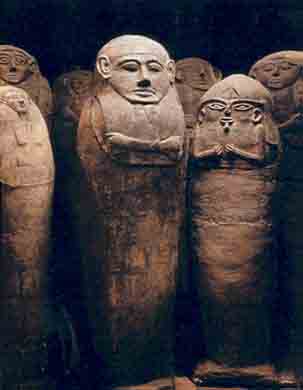Image Details

Israel Museum/Nahum Slapak
These mummy-shaped coffins, discovered at a vast ancient cemetery at Deir el-Balah, are nearly identical to coffins found in the Nile Delta—more evidence that the material culture of Canaan bore significant Egyptian influences. Located about 10 miles southwest of Gaza, Deir el-Balah is the only Canaanite site at which Egyptian-style pottery was more popular than local types. Carved into the lids of the coffins—or anthropoid sarcophagi, in technical parlance—are features of the deceased buried within, including the arms, face, wig and hands. Many of the faces are unmistakably Egyptian: Sporting a small beard, they resemble Osiris, the Egyptian god of the underworld.
Though the evidence from Beth-Shean and Deir el-Balah suggests that the Egyptians maintained a large-scale imperial presence in Canaan, excavations at other sites have uncovered only a few examples of purely Egyptian artifacts. Artifacts at most sites are stylistic hybrids, bearing both Egyptian and local influences.
